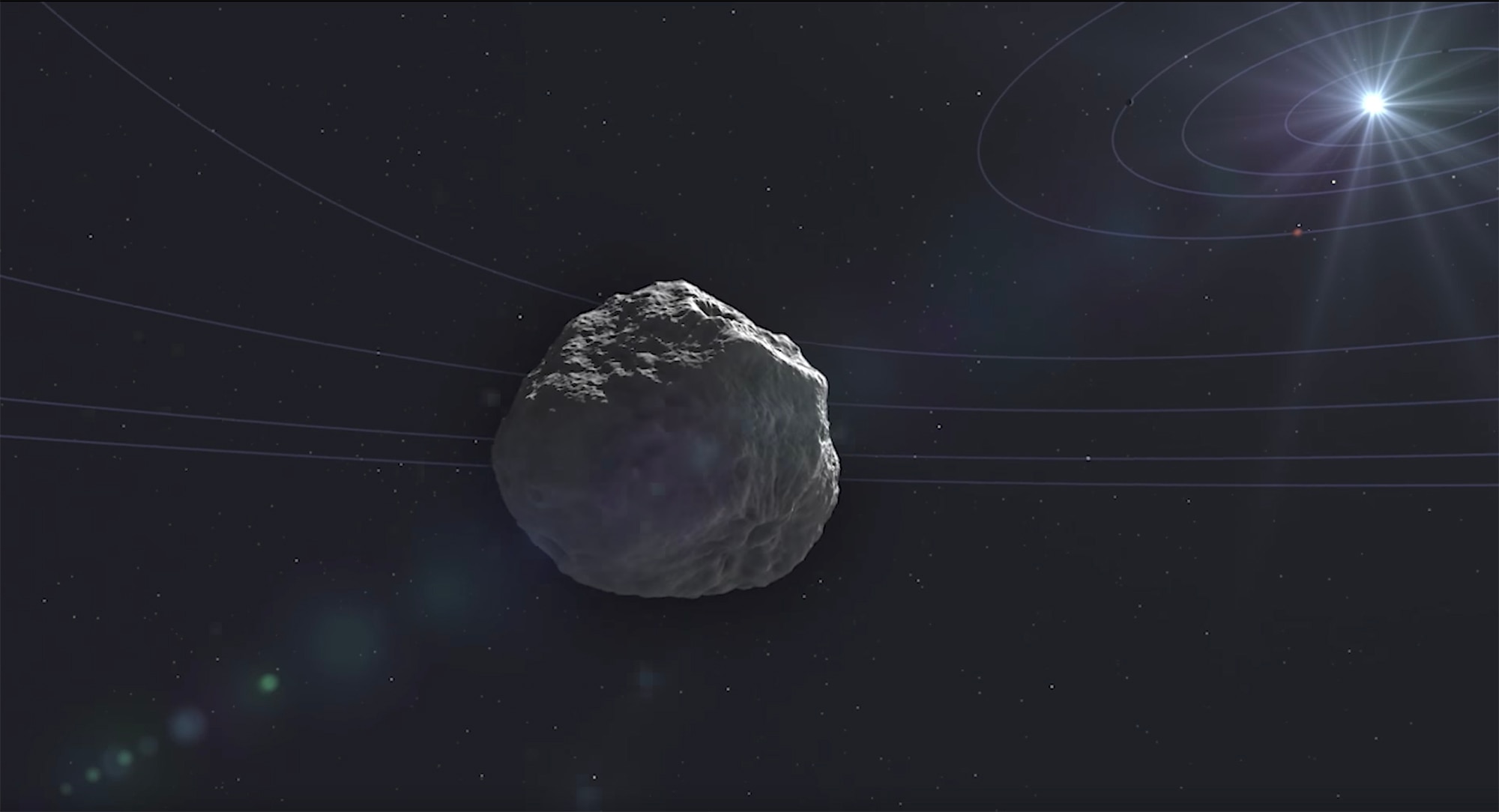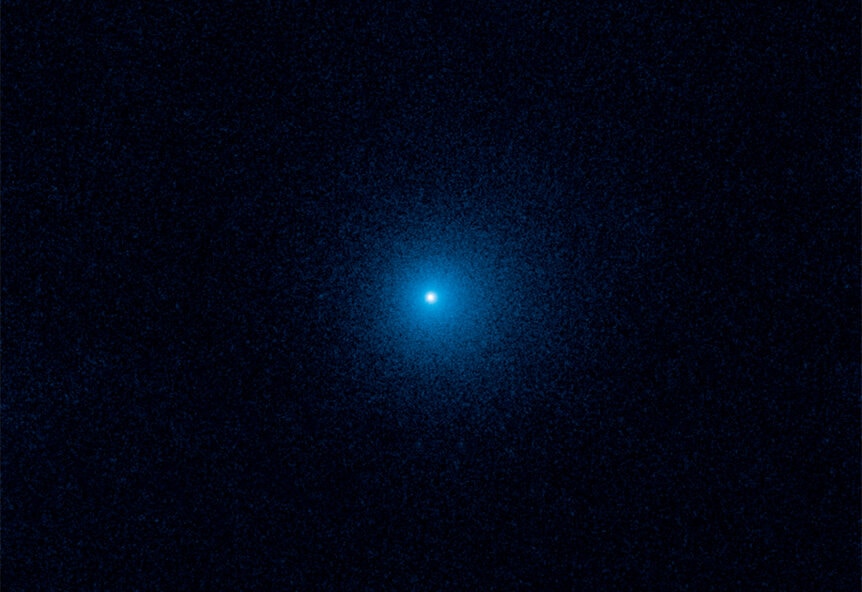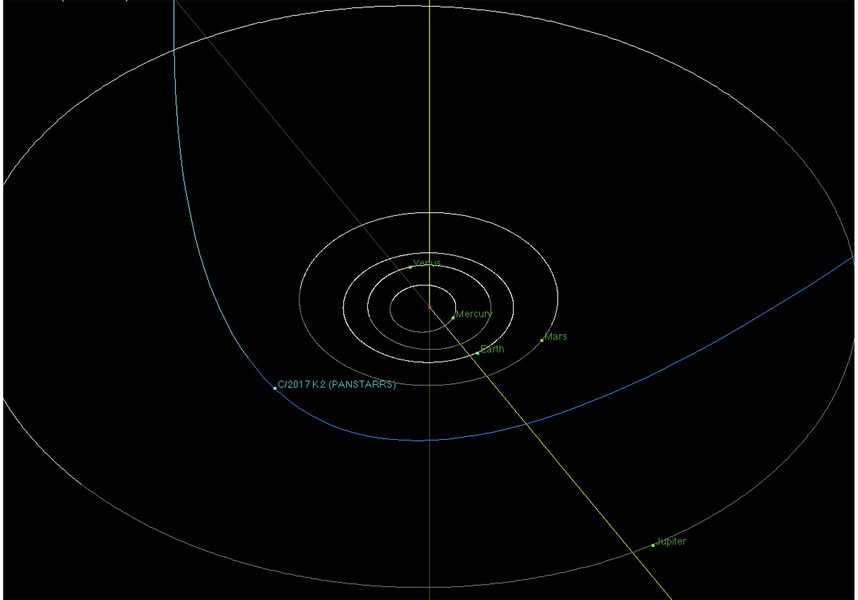Create a free profile to get unlimited access to exclusive videos, sweepstakes, and more!
Astronomers spot the most distant active inbound comet ever - 2.5 *billion* km away!

I don’t usually write about distance-record-breaking discoveries, because, in astronomy, they’re usually incremental, and usually don’t last for long. But this one is pretty cool (literally), and the fact that it’s a record-breaker is actually scientifically important.
In May 2017, astronomers discovered a comet on its way from the very distant depths of space into the inner solar system. The comet is called C/2017 K2 (Pan-STARRS), and it’s a roughly 20-kilometer wide chunk of ice and rock that orbits the sun on a wide, extremely elliptical orbit.
And I do mean extremely. It only gets about as close as Mars does to the Sun (so it never gets anywhere near Earth), and while the exact farthest point in its orbit isn’t clear, it’s possible it’s hundreds of billions or even trillions of kilometers from the Sun.
It’s coming from a long way out.
And that’s why this is so interesting: It’s already active. That’s not only unusual, it’s unprecedented. No comet has ever been seen to be active this far out from the Sun while still on its way in.
By “active”, astronomers mean that ice is turning into a gas on its surface. This happens when the comet is warmed by the Sun, and is what gives comets their iconic shape and structure. They’re mostly rock and ice, and when they get close enough to the Sun (about as far as Jupiter is from the Sun, roughly), that ice heats up and turns directly into a gas. This process is called sublimation, and when it happens, the comet gets surrounded by a fuzzy halo called a coma.
But Hubble observations of the comet taken in June show the comet already had a coma 130,000 km across (bigger than Jupiter) when it was a 2.4 billion km from the Sun! That’s farther out than Saturn is from the Sun. Not only that, but once you know a comet’s orbit, you can cross-correlate its position with old observations from other telescopes to see if they spotted it without knowing it at the time. And sure enough, the Canada-France-Hawaii Telescope observed K2 in 2013 (before it was even officially discovered) and saw it was active even then. At that time, it was 3.5 billion km from the Sun! That’s out past Uranus.
At those distances, water is far too cold to sublimate. Sometimes, in distant comets when they are still cold, water ice changes structure from an amorphous composition to more familiar ice crystals, and this can release heat and cause some gas to escape. However, at that distance, K2 was still too cold to do even that.
So, some other substance must be behind the activity. It’s not certain what it might be, but the likely suspects are frozen oxygen, nitrogen, carbon dioxide, or carbon monoxide. All of those sublimate at colder temperatures than water.
And that’s why this is so interesting: Comets that have come close to the Sun before generally have those ices “burned” off their surfaces, so they aren’t active when they’re this far away. The fact that we do see these gases means this is very likely to be a first-time comet, one that is literally on its first inbound trip in the history of the solar system. It may be a pristine example of the solar system, almost untouched for 4.5 billion years!
The orbit shows that, as well. It’s hyperbolic, which means that it’s moving a little bit faster than escape velocity for the Sun. That, in turn, means this’ll be a one-hit wonder: When it swings past us and heads back out into deep space, it’s not coming back. Ever. It has enough speed to escape from the solar system forever.
So, this’ll be our one and only chance to see it, at least until we develop easy interstellar travel. But I have to wonder why the comet is hyperbolic. It probably has orbited the Sun for billions of years, well past Neptune, but something happened to not only drop it toward the Sun but also give it a velocity kick. Maybe it collided with another object, or the gravity of a planet bumped it a tad. It’s also possible that the orbit started off more-or-less normal (parabolic; the shape of a comet orbit if it’s dropping in from very far away), but some of the outgassing gave it enough of a shove to change the orbit shape. No matter what, it’s something worth taking a good look at.
And we have time. It won’t get to perihelion —closest approach to the Sun — until late 2022. Given that we can see it already when it’s so far away, it’ll only get easier to observe between now and then. It won’t get terribly close to Earth, so don’t expect a show-stopper, but hopefully it’ll be visible to smaller telescopes. It’s hard to say, because sometimes first-time comets can get bright, but they’re also persnickety. Time will tell.




























